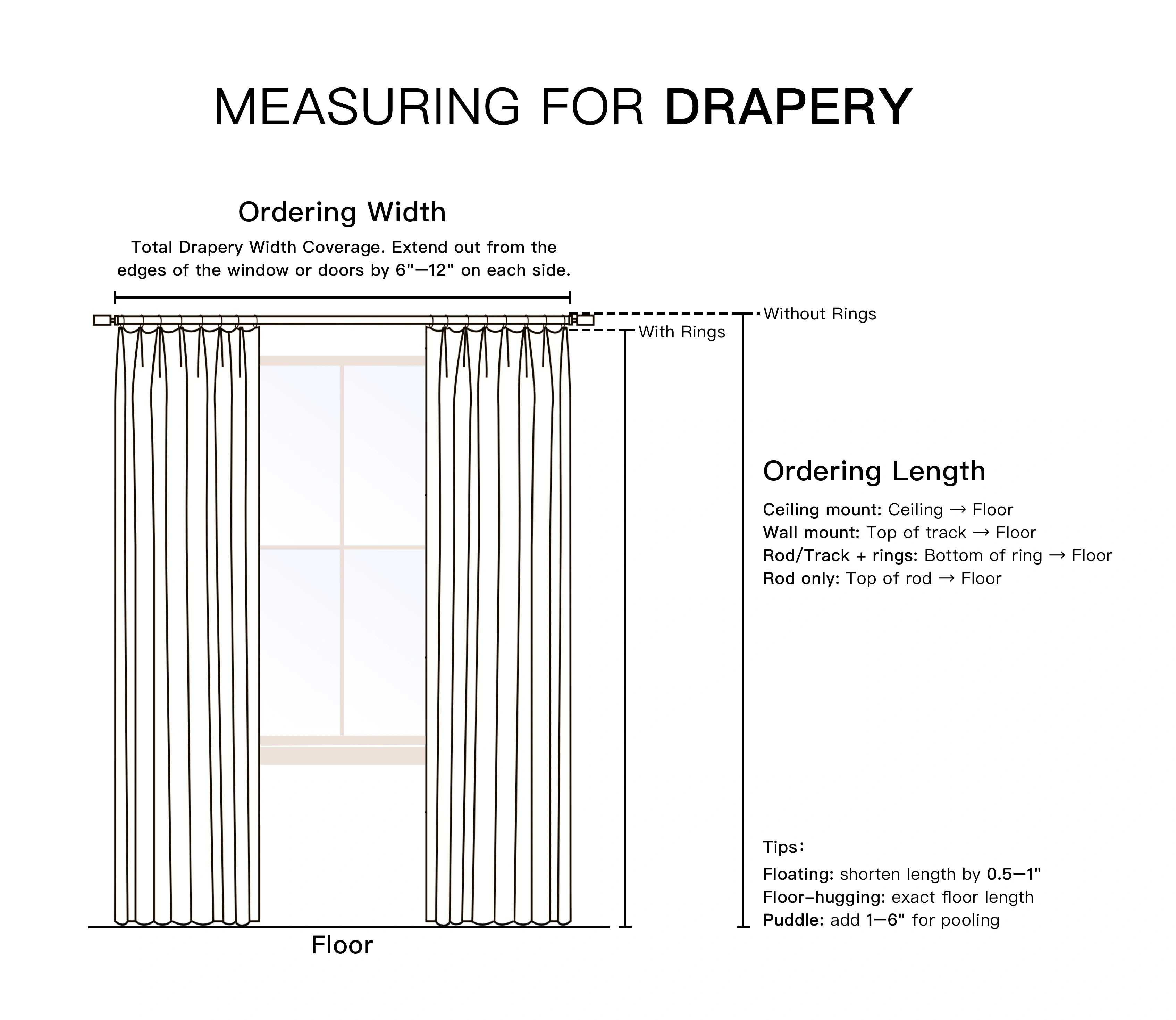
Curtains & Drapery Measurement Instructions
STEP 1: SELECT TOTAL DRAPERY WIDTH COVERAGE (Ordering Width)
1. Measure the width of the area you would like to cover. This is your ordering width (fullnessisalreadyaccountedfor). If your drapery needs to be functional (open and close), the total coverage width should equal the same span, left to right, that your hardware does.
2. We recommend whenever possible to extend out from the edges of your window or doors as much as 6" - 12" on each side. This will help make the area look larger, and will also maintain as much natural light as possible when the Drapery panels are open. Calculate the final rod or track length by adding the window width to the extensions on both sides.
3. If ordering stationary Drapery panels that don’t need to close (stationary Drapery panels) you can consider ordering drapery with less coverage while still getting a finished look.
STEP 2: SELECT FINISHED DRAPERY LENGTH (Ordering Length)
1. Typically, mount the curtain rod or track about 6–10 inches above the window frame. Placing the hardware higher visually elongates the window and makes the room feel more spacious.
2. Measure the curtain drop from the mounting hardware to the floor, depending on installation type:
- For ceiling-mounted tracks, measure from ceiling to floor.
- For wall-mounted tracks, measure from the top of the track to the floor.
- For curtain rods with hanging rings, measure from the bottom of the rings to the floor.
- For curtain rods without rings, measure from the top of the rod to the floor.
3. Choose how you want the curtain to fall at the floor:
- For a “floating” look (slightly above the floor), shorten the length by about 0.5–1 inch.
- For a precise floor-hugging hem, use the exact length to touch the floor.
- For a “puddle” or luxurious pooling effect, add roughly 3–6 inches (8–15 cm) to the floor-length measurement.
Workroom Note:
1. During production, we automatically apply 2× fabric fullness to ensure a rich, gathered appearance. Do not double the width yourself. Avoid manually multiplying by two to prevent ordering oversized curtains.
2. We recommend a small break (1⁄4"–3⁄4") or puddle (1"–4") for uneven floors and/or natural materials that stretch (like wool or linen), or a 1⁄2" floor clearance for draperies being opened and closed frequently.
3. As with all fabrics made of natural fibers, there may be slight changes in the fabric over time due to a number of variables, including humidity, temperature, and moisture. This is considered normal. If this is a concern, consider ordering a length that includes a small puddle.
4. Synthetic materials stretch less.
5. Overlaps and returns are added to ordering width by workroom.